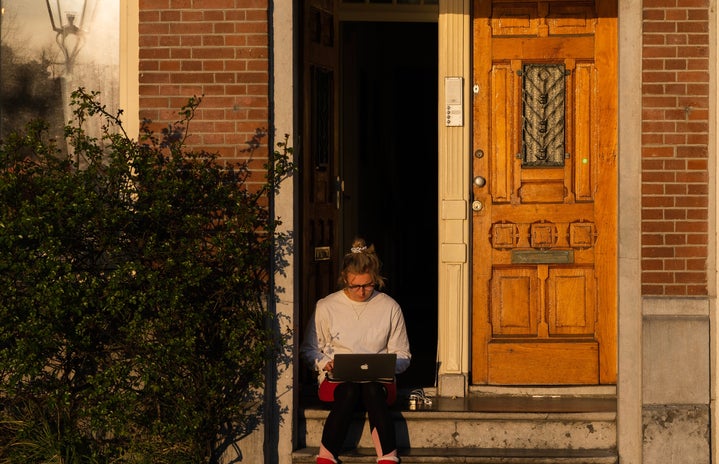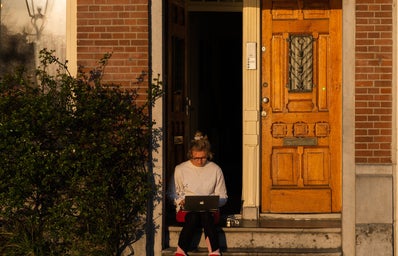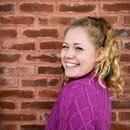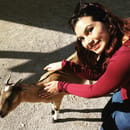My childhood bedroom looked exactly the same as it did when I left it three months earlier. It smelled the same, too—like the “Hawaiian Breeze” candle I bought to drown out the drowsy, gasoline-and-mulch infused scents of suburbia. The candle doesn’t actually smell like Hawaii. It smells pleasant in the way that most perfect lies do, like artificiality and facade, like what a Hibiscus flower might smell like in a dream.
In real life, though, Hawaii smells like saltwater-sweat and humidity, and Hibiscus flowers have that odd, sickly tinge of pollen that always makes me sneeze. My candle smells nice, but reality smells fallible. And for whatever reason, as I look around at the walls I painted blue in fourth grade and the pictures I took with people who I don’t even speak to anymore, I decide that I would much rather be in a real, imperfect place than one that’s beauty can only be immortalized in wax.
Three months ago, I went to study abroad in Madrid, Spain. My Spanish is subpar, and I had never been to Europe before, and the months leading up to my departure were some of the most traumatic and tumultuous of my life. I wasn’t sure if I was doing the right thing when I booked that first ticket to a far-away land.
But what I was sure of was the tension in my shoulders and the cinch of my jaw, the ever-present feeling that my heartstrings were fraying with every monotone day that passed. People often describe depression as emptiness, but for me, it’s quite the opposite. It’s heavy. It’s being full of things that don’t matter.
I was full of lots of things that don’t matter before I went to Spain. I cared about what people thought of me and what grades I got, and I spread myself so thin that my skin was stretched taut around my weary skeleton. Life had become burdensome, and so when my best friend asked if I was “running away” by leaving everything I knew behind, I replied in a text with, “I guess I am running away. But I think maybe if I run far enough, I can finally remember what it feels like to sit still and breathe deep and feel okay.”
And so I ran. I ran fast and far and fearless. I walked to class in the early-morning fog, relying on the olfactory overthrow of strong coffee and flash-fried churros to wake me up. I spoke broken Spanish with new friends, laughing at my missteps as we watched the sun set over cities older than our religions. I slept on buses and trains, in stained hostel bunks everywhere from Brussels to Chefchaouen. I got lost on the Metro trying to find a pharmacy, and spent all night trying to walk home alone. I wrung my heart out over cities I had only seen in movies, squeezed hands and wiped tears with my flatmates in the back of an Uber when we saw the Eiffel Tower for the first time.
I was living so vibrantly that I forgot I was vincible. COVID-19 was swift to remind me. As programs in Rome and Verona were shut down, we tried to drown out the news cycles with tinto de verano and foolish reassurance, naive denial. On March 13, 2020, when the travel ban was instituted in the United States, my mom called and told me that she had booked me a plane ticket home, departing in less than 24 hours.
That last night, my flatmates and I curled up on the couch in our tiny apartment, listening to the sounds of a still buzzing city. We heard the trash truck come in the middle of the night one last time, mulled over photos we took on our last trip to London, felt time slip through our fingers like sand.
And then I was home. In my childhood bedroom. The one that smelled like “Hawaiian Breeze.” Trying not to forget what it felt like to really feel something.
The first thing that I did was open my new suitcase, one I had bought at Primark for the sole purpose of transporting my new artwork home. I took down those pictures of half-hearted grins in perfectly-pressed prom dresses and replaced them with canvases from Morocco and France, Ireland and the Sierra Nevada. In the middle, I hung an abstract piece that I had bought in Madrid. My friends and I spent over an hour standing in Retiro Park as the artist, Yousef— a gentle old man with smile lines so deep you could plant flowers in them—told us what every one of his paintings meant. I had chosen this one, circles and triangles layered on top of each other to make the faint silhouettes of people, different shades of pastel tossed blurrily around their figures.
“It’s same person, you see?” Yousef had explained. “Same person in all different stage of life. But always happy.”
It was hard to imagine that I could ever find happiness in quarantine. I had gone from the most free I had ever been to the most trapped I had ever been. I had a new hunger for adventure and adrenaline, yet what I can now reflect on as a rather pretentious worldview; I thought that every day of my life had to be fit for the silver screen to matter.
As the days ticked by, though, something inside of me shifted. My self-pity and frantic fear that I would be trapped in monotony for the rest of my life began to fade. When my little puppy curled up beside me, his heartbeat a percussion of comfort in my ear, I felt okay. When I started running again and found that instead of running to lose myself, I was running to find myself—to think and to breathe and to hurt and to fly—I felt okay. When I looked back on my pictures, I stopped feeling suffocated by the genuine smile that glowed back at me. My happiness is beautiful, but so is my loneliness. My peaks of excitement were beautiful, but so are my valleys of waiting. Madrid is beautiful, but so is my little sister, and the trees that line the cul-de-sac where I grew up riding bikes, and a bed that is nice and warm and mine.
One day in July, I threw away that sickly-sweet “Hawaiian Breeze” candle, and I just let my room smell like yesterday’s burnt coffee.
Raw and human and messy and divine.
Persistently beautiful.



